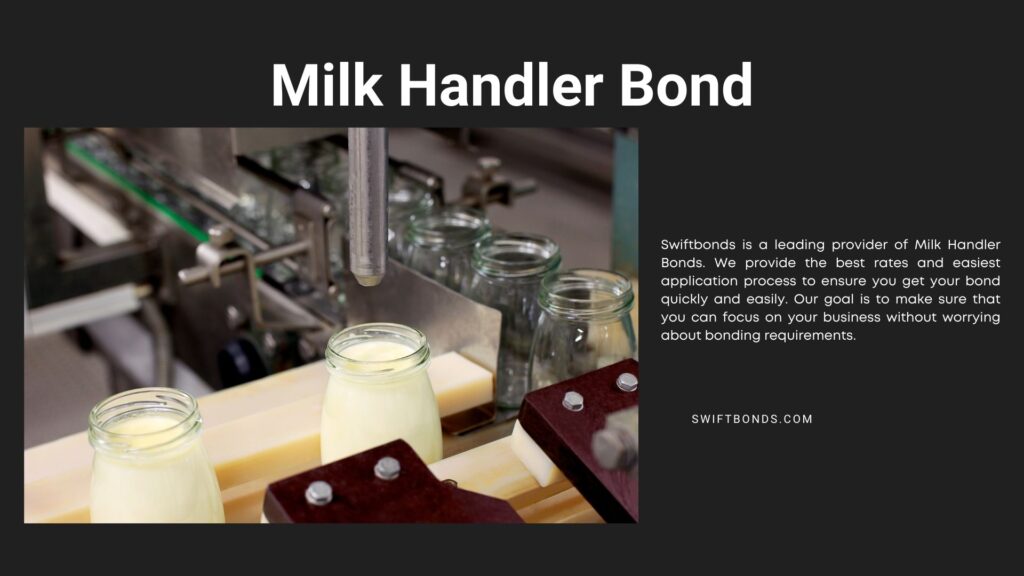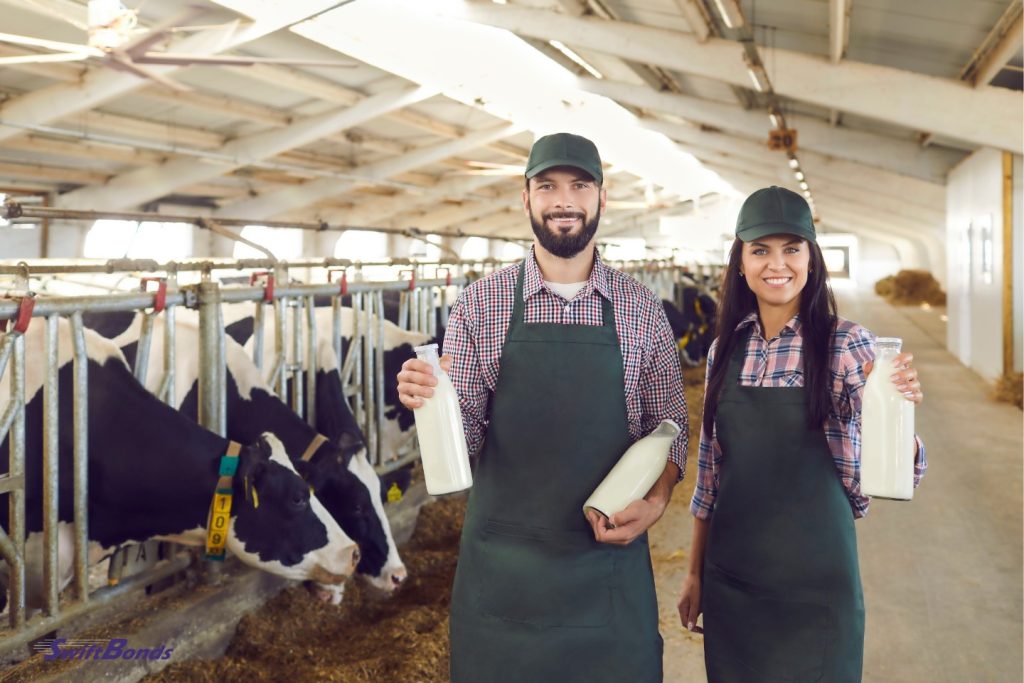Get An Instant Quote on California Milk Handler Bond Now
Introduction
The California Milk Handler Bond is a regulatory surety bond required by the California Department of Food and Agriculture (CDFA) for businesses or individuals engaged in purchasing or handling milk and cream directly from producers within the state. This bond is making sure that milk handlers operate in compliance with the California Food and Agricultural Code and fulfill their financial obligations—primarily the timely and full payment to dairy producers and cooperative associations. As a safeguard, the bond protects the economic interests of California’s dairy industry by promoting accountability and trust between handlers and producers.
What is a California Milk Handler Bond?
A California Milk Handler Bond is a surety bond required by the California Department of Food and Agriculture (CDFA). It guarantees that milk handlers will follow with state regulations and pay producers and cooperative associations for milk and cream purchased or received.
Purpose of the Milk Handler Bond
The primary purpose of the bond is to protect dairy producers from non-payment or delayed payment. Ensure that milk handlers fulfill their financial obligations in accordance with California law. Provide a legal remedy for producers if a handler fails to meet their payment obligations.
If a handler does not pay a producer as required, the injured party can file a claim against the bond. If the claim is valid, the surety company will compensate the producer up to the bond amount. The milk handler must then reimburse the surety company for any claims paid.
Who Needs This Bond?
Entities that may be required to post a California Milk Handler Bond include: Milk processors, Milk buyers, Dairy distributors, Cooperative associations that handle milk from producers.
The requirement applies to handlers who receive milk or cream directly from California dairy farmers or cooperatives.

To obtain a California Milk Handler Bond through Swiftbonds
Contact Swiftbonds: Reach out to Swiftbonds directly to discuss your specific bonding needs.
Complete the Application: Swiftbonds will provide you with a bond application form. Accurately fill out this form with detailed information about your business and the bond requirement. Ensure all information is correct to avoid delays.
Submit Required Documentation: Along with the application, you may need to provide additional documents such as:
- Financial Statements: To demonstrate your business's financial stability.
- Personal and Business Information: Including identification and business licenses.
- Project Details: If applicable, information about the operations requiring the bond.
Undergo the Underwriting Process: Swiftbonds will review your application and documents to assess risk and determine bond eligibility. This process includes evaluating your creditworthiness and financial health.
Receive Approval and Bond Issuance: If approved, Swiftbonds will issue the California Milk Handler Bond. You'll need to sign the bond agreement and pay the premium, which is typically a percentage of the bond amount.
File the Bond with the CDFA: After issuance, submit the bond to the California Department of Food and Agriculture (CDFA) to comply with state regulations.
By following these steps, you can efficiently secure a California Milk Handler Bond through Swiftbonds, ensuring compliance with state requirements and the smooth operation of your dairy handling activities.
The Amount and Duration of the Bond
The bond amount is determined by the CDFA and is typically based on the volume of milk handled or estimated monthly payments to producers.
The bond must be renewed annually or as specified by the CDFA to remain in compliance with licensing or registration requirements.
Penalties for not having a Milk Handler Bond?
Operating without a required bond may result in Denial or suspension of a milk handler license, Fines or enforcement actions by the CDFA, Legal liability for unpaid producer invoices.
Conclusion
In conclusion, the California Milk Handler Bond is a vital tool for maintaining integrity and stability within the state’s dairy supply chain. By requiring handlers to obtain this bond, the CDFA provides a layer of financial protection for producers and helps ensures that payments for milk and cream are made promptly and in accordance with the law. Maintaining an active bond is not only a legal obligation but also a demonstration of financial responsibility and ethical business conduct in California’s agricultural sector.

Frequently asked questions
Why is the bond required?
The bond deliver financial protection to dairy producers in case a handler fails to pay for the milk or cream they receive. It ensures compliance with the California Food and Agricultural Code and promotes fair business practices in the state’s dairy market.
How long is the bond valid?
The bond is typically valid for one year and must be renewed annually or as required by the CDFA to remain in compliance with state law.
What happens if a claim is made against the bond?
If a producer files a valid claim due to non-payment, the surety company pays the claim amount (up to the bond limit). The milk handler is then financially responsible for reimbursing the surety.
Why is the bond required?
The bond provides financial protection to dairy producers in case a handler fails to pay for the milk or cream they receive. It guarantees compliance with the California Food and Agricultural Code and promotes fair business practices in the state’s dairy market.
How much does the bond cost?
The bond premium (the amount the handler pays) is a small percentage of the total bond amount, generally ranging from 1% to 5%, depending on the handler’s credit score and financial standing.

